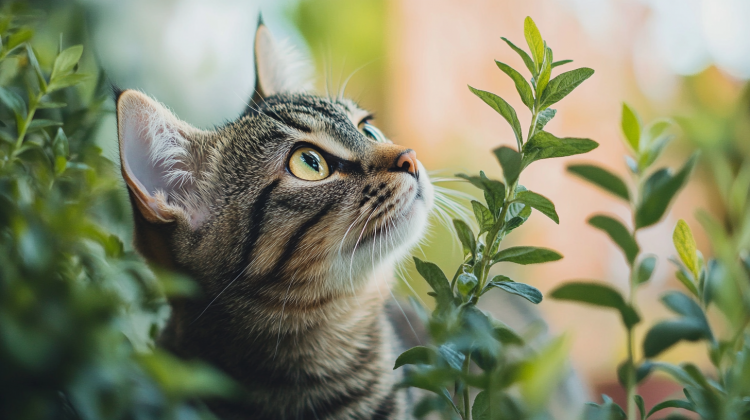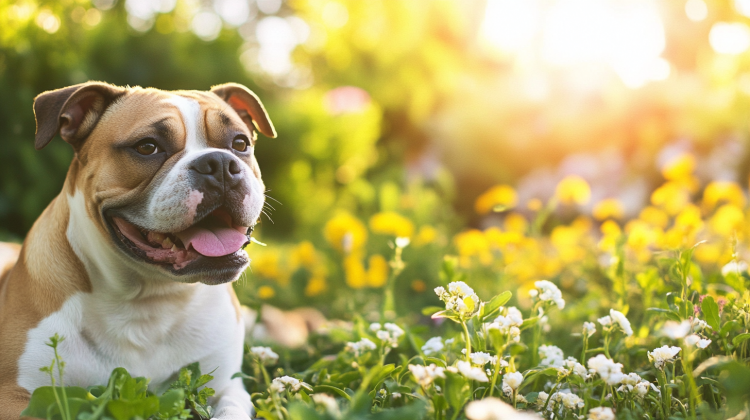

Gardening with pets in mind doesn’t mean reinventing the wheel—it means making thoughtful choices to ensure your green space is both beautiful and safe for curious companions. While dogs and cats generally avoid eating plants unless something smells particularly interesting, accidents can happen, especially with younger or adventurous pets. By choosing non-toxic plants, you can minimize risks and create a more harmonious space where your pets can safely explore and relax.
Do You Really Need a Pet-Safe Garden?
It’s true—dogs and cats have coexisted with plants in nature for millennia, and the vast majority won’t bother nibbling on your greenery. However, some plants are particularly enticing due to their texture, smell, or placement, and for pets prone to chewing, ingesting toxic plants could lead to mild discomfort or, in rare cases, more serious reactions. Creating a garden that prioritizes non-toxic plants doesn’t mean you tear out your garden. This guide just helps you make small, practical adjustments for peace of mind.
For example, a puppy might gnaw on a plant while teething, or a cat might swat at a dangling leaf and decide to taste it out of curiosity. By incorporating pet-safe plants into your garden, you reduce the likelihood of these encounters turning into a problem.
All that being said, watch your pets when they are outside to help avoid any accidents. It’s that simple. If you are keeping an eye on your pet they are less likely to ingest something that can make them ill, like poisonous plants.
Pet-Safe Plants That Are Beautiful and Practical
1. Spider Plant (Chlorophytum comosum)
- Why It Works: Hardy, low-maintenance, and completely safe for pets, spider plants thrive indoors or outdoors.
- Best Use: Hang in baskets or use as a groundcover in shaded areas.
2. Boston Fern (Nephrolepis exaltata)
- Why It Works: Non-toxic and lush, Boston ferns are perfect for shaded spots where your pets like to lounge.
- Best Use: Add them to patios, hanging planters, or shady borders for texture.
3. Marigolds (Tagetes)
- Why It Works: Bright, cheerful, and pet-safe (though large quantities may cause minor irritation), marigolds add pops of color while deterring pests.
- Best Use: Plant as borders or around vegetables for pest control.
4. Bamboo (True Bambusoideae)
- Why It Works: True bamboo (not “lucky bamboo”) is pet-safe and great for creating privacy or adding an exotic touch to your garden.
- Best Use: Plant as a natural screen or accent in a sunny area.
5. Calathea (Calathea spp.)
- Why It Works: Known for its vibrant, patterned foliage, Calathea is safe for pets and thrives in humid, shady spots.
- Best Use: Use in containers or as an accent in shaded garden corners.


Practical Tips for Gardening with Pets
1. Know Your Pet’s Habits
Most dogs and cats aren’t interested in munching on plants, but if you have a curious pet that likes to dig or chew, consider placing more delicate plants in harder-to-reach areas. Raised planters or hanging baskets can keep plants out of harm’s way.
2. Keep Mulch and Chemicals Pet-Safe
Avoid cocoa mulch, which contains theobromine (toxic to dogs), and opt for pet-friendly alternatives like pine or cedar mulch. Use organic fertilizers and avoid pesticides that could harm pets if accidentally ingested.
3. Create a Space for Your Pet
Dedicate part of your garden as a pet zone with soft grass, shaded areas, and safe plants for them to explore. Adding a few pet-safe herbs, like parsley or catnip, can even provide enrichment for curious noses.
Enjoying a Balanced, Pet-Friendly Garden
A garden designed with pets in mind doesn’t need to sacrifice beauty or function. By choosing non-toxic plants, you minimize the slim risk of an accidental nibble while still enjoying a lush, thriving green space. Most importantly, it allows your pets to explore and relax alongside you without unnecessary restrictions or worry.
Your garden should be a shared haven where plants, pets, and people coexist naturally. With a little forethought, you can create a space that works for everyone—without overcomplicating the process.





